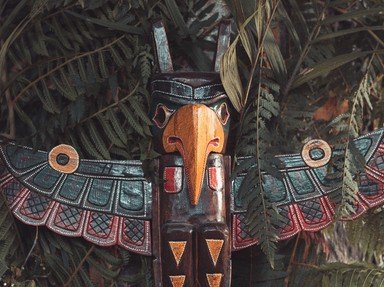Quiz Answer Key and Fun Facts
1. The Quapaw are part of the Dhegiha Siouan language group and were first discovered in 1673 by explorers in the Arkansas area. From what country were these explorers?
2. The Quapaw lived in four large villages along a major waterway. Which river, which joined the Arkansas river nearby, did they utilize?
3. The tribe was divided into two large divisions, or moieties, that represented the Earth and the Sky. The moieties shared responsibility for the calumet. What sacred object was this?
4. The tribe's villages were made up of longhouses occupied by multiple families that were arranged around a plaza. There was also a council house and a platform for greeting visitors. With what material were the longhouses covered?
5. Quapaw history, passed through generations and told to explorers, states that the tribe originally came from the western part of the United States near the Pueblo tribes.
6. As more Europeans came into the Arkansas territory, epidemics began to spread amongst the Quapaw tribe. What epidemic in particular, especially in 1698, dramatically decreased the population?
7. The Quapaw shared their geographical area and boundaries with other tribes. One tribe in particular, closely related to the Choctaws, frequently raided the Quapaw villages. What was this tribe?
8. By the early 1800s, the Quapaw were trading with other tribes and with white settlers. What two products did the supply? One was grown by the women and the other raised by the men.
9. A treaty in 1818 moved the Quapaw to a reservation in the Arkansas area. By 1824, that treaty was annulled by the United States and they were moved to the Red River area amongst the Caddo peoples. What state was this?
10. In the 1830s, the Quapaw moved permanently from their lands to a reservation in northeastern Oklahoma. In the 1970s, this proud tribe designed a flag to represent their history. What bird's feathers are featured on it as part of the story?
Source: Author
stephgm67
This quiz was reviewed by FunTrivia editor
ponycargirl before going online.
Any errors found in FunTrivia content are routinely corrected through our feedback system.
